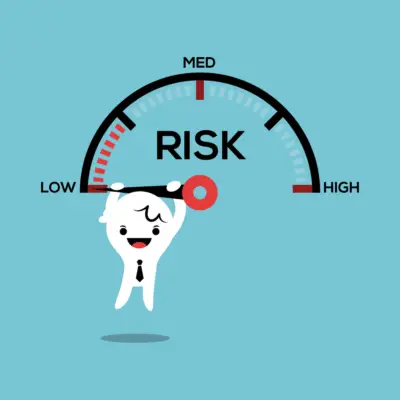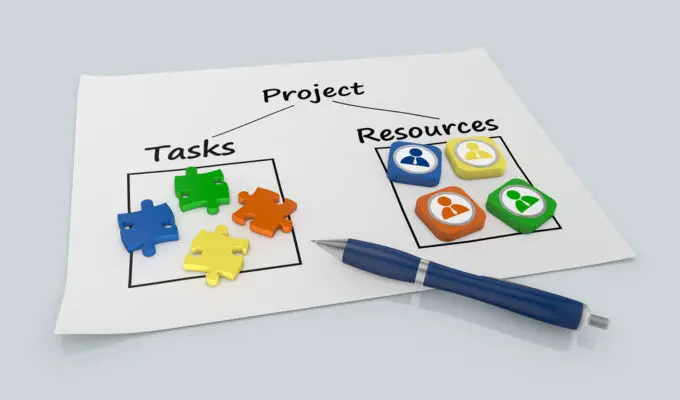A project communication plan ensures timely and effective communication to project stakeholders. The communication plan should answer who needs what information when it is needed, and how it will be distributed. Creating a project communication plan early in the project lifecycle will save time and frustration later.
Before creating a project communication plan, it is important to understand the project stakeholders. A stakeholder is anyone with a vested interest in the success or failure of the project.Communication plan is a key component of a risk management policy.
Conducting a stakeholder analysis will help you develop targeted messages for each group and understand what information each stakeholder needs to succeed.
There are many different ways to conduct a stakeholder analysis. A simple stakeholder analysis template can help you get started. Once you have identified the stakeholders, you can begin to develop targeted messages for each group. This brings out the importance of risk management in projects.
Now that you have identified the stakeholders and understand what information they need, it is time to create a communication plan. The communication plan should answer who needs what information when it is needed, and how it will be distributed.
When creating the communication plan, it is important to consider the following:
– Communication objectives: What do you want to achieve with your communications?
– Target audience: Who do you need to communicate with?
– Key messages: What do you need to say?
– Channels: How will you deliver your message?
– Frequency: How often will you communicate?
– Timing: When will you communicate?
– Budget: What resources do you have available?
– Roles and responsibilities: Who will be responsible for each task?
A project communication plan is a document that outlines how communication will flow within a project. This includes who will be responsible for sending and receiving messages and the format and frequency of communication. A change management template can be an inclusion of enterprise risk management framework.
A well-defined communication plan can help ensure that all stakeholders are kept up to date on project progress and can communicate effectively. In this post, we’ll provide a project communication plan example that you can use as a starting point for creating your own plan.

Basic Outline for a Project Communication Plan
1. Define the purpose of your project communications
What information do you need to communicate and why? Be as specific as possible. Also, consider who needs this information (stakeholders, management, teams, etc.) and when they need it (during which phases of the project).
2. Determine methods for distributing project information
Will you use email, face-to-face meetings, teleconferencing, webinars, or reports? Try to use various methods to reach as many people as possible with your message. You may also want to consider using different methods at different project stages.
3. Develop a schedule for sharing project information
How often will you communicate? Will there be regular update meetings? Are there any key milestones or deadlines that need to be communicated? Budget sometime each week for communicating with your team.
4. Assign roles and responsibilities for distributing project information
Who will be responsible for writing and distributing updates? Who will maintain the project website or intranet page? Have one person responsible for each method of communication so that nothing falls between the cracks.
5 . Evaluate and adjust your communication plan as needed
As your project progresses, you may find that certain methods are working better than others or that you need to communicate more (or less)frequently than you initially thought. Be prepared to adjust your communication plan accordingly to ensure that everyone has the information they need when they need it.
The project Manager is constantly working to balance responsibilities, including ensuring project team members are focused and meeting their objectives. How do we convince people to meet project deadlines? What secret is behind successful businesses? Of course, there are always some unique differences though they have no secrets: communication.
How to create a project communication plan?
Communications are crucial for your project. The project manager must ensure everyone has their own perspective to work together to achieve success. The project is extremely challenging and involves many hours of work to be completed.
Most high-performance companies have one that helps with high-performance projects. How do I create an email communications plan to keep everyone updated and informed?. The basis of a communication plan is in quality risk management.
A well-planned communication plan is essential for successful project development. All daily project tasks involve interacting and gaining feedback. The development of the project communication document is vital as it outlines who to talk to.
Identify the owner and stakeholders related to each communication
As a Project Manager, you can handle most communications, but you may have other responsibilities. Assign responsibilities and make sure the plan reaches its full potential. If you are naming a particular name, you must include the audience and stakeholders.
Key actors will have a chance to update their services whenever necessary. Are there any issues in defining stakeholder groups? The project manager can use a project communication plan template to record the various stakeholders.
Choose a communication method
Are you planning a project meeting? Think about the way your team works to keep them informed. What is the best way to find a piece of project information? Check projects that have gone on for some time to find out if something has worked.
Define the purpose of your communications
When an organization bombards people with e-mails and meetings, they cannot do the tasks needed, which may cause them to miss important updates. Be purposeful in your plan and make all your communication relevant.
Depending on the scope you feel ambitious, make up the agenda of the topic to be analyzed in every session.
Set a cadence for your project communication
Set regular communications frequency to simplify processes and create measurable objectives. It eliminates the possibility of sending a random update request to your computer’s server. It allows the participants of the project to prepare time for important reports.
The project manager will own the project communication plan and determines communication frequency.
List your project’s communication needs
Each project can vary; therefore, it starts with defining the length or the scope of work and also the individual preferences. Give an overview of all communications necessary for a successful project and communication preferences.

Why is a project management communication plan important?
Communication is essential for project management. It is important for the plan to stay organized and maintain communication. Otherwise, deadlines are lost and it causes frustration for all.
Your responsibility is to create all the tasks and deliverables that will get you on the right path. What are the good reasons for not doing this for project communication? Communication plans strengthen a business plan if it sets clear expectations for sharing updates.
Project communication plan – Ensure the communication plan is updated for everyone involved. All stakeholders receive corresponding expectations and eliminate knowledge gaps. It also promotes transparency and creates relevant communication methods.
Benefits of Project Communication Plans
The underlying project communication planning supports effective communication. A communications strategy to improve project flow will help reduce project failures. Another major benefit of such services is better management of expectations and a more proactive approach to planning.
A communication strategy in projects is extremely strategic & easily implementable. You can ease your job and the work of your projects team. Many project managers and stakeholders enjoy the benefits of implementing their communications plan.
Set and manage expectations
Project communication can be done in two ways. Similar to project planning, expectations must exist, and the project team and customers must make communication smooth.
When letting a client know about the project early in the process, you establish a tone for all the projects. It is also beneficial if they are aware of the information you want from them so the preparation may be easier when the time arrives.
It simplifies Project planning
The project manager’s communications plan describes how critical data is presented during development. How often and for how long do you have the right communications channels? While preparing your project, you will also need a communication plan.
Larger projects require different communication skills than small projects; the same is true for projects involving groups or individuals.
It enhances communication with clients and stakeholders
Your communication plan does not cover all of your project teams. The client should outline how to communicate with the stakeholders.
Most clients do not need granular information. But it’s impossible for anyone else to have an e-mailed notification of their complete job completions. One solution is reducing access to users in teamwork.
Creating an efficient communication strategy helps cut costs for the project manager. When teams follow their plans, they can gain the information necessary to maintain them. So workers can be less distracted and checked about their progress on a given task.
Not only that, if a good communication strategy is implemented, it reduces the number of meetings required. Poor communication is the main cause of unnecessary meetings.
It creates a document your team can always reference
You want to make documentation centrally accessible and give an answer to a single dispute or disagreement about something or any topic you are disputing. A project communication plan is one form of this.
This document will be accessible by anybody who works with the organization or is most likely outside the company’s network of customers/stakeholders. The project management document is also a neutral third-party tie-breaker in discussions regarding the planned happenings.
It helps your team set clear expectations
A communication plan is a great tool for team communication as it sets clear expectations for what happens during the project lifecycle. For example, No one can complain that Sandra hasn’t updated her project.
Now we have a clear list of people who communicate about the types of data they receive and a list of optimal workflows. The team can also refer to the plan as a third-party authority when the group believes another person has a less effective communication plan.
How to create a project management communication plan?
What are some ways to achieve this?Every project has specific requirements, and each one will suit your context.
Set out with a defined goal(s)
Identify a specific plan goal and the plan’s objectives. This isn’t necessarily the goal of all project work. The goal must be related to project communication at some point. These are high-level goals instead of direct actions like sending completing tasks e-mail.
These goals are intended for those actions but do not contain the necessary detail. Some websites will have template guides omitting that important step or putting it in place. It would be best not to assume every person knows the goal and take a few minutes and outline them as soon as you begin the communications process.
Choose a format that helps everyone visualize the plan
Next, you must look into how to present the communication plan effectively. The communication plans are written in words on paper for short and simple projects.
When planning for more complicated projects with multiple people, however, you must have a visual communication plan. After setting your goal and preparing details for your plan, think about how visuals can help your messages to be understood. Using timeline charts or other visual media to communicate expectations can be more effective.
Add your timeline, roles, channels, and any other important details
Once you set a basic goal and format, you should be ready with a communication plan. Those steps are when the most important details of the plan are revealed and presented as visuals. A good communication plan typically has categories like stakeholders (who need updates), deliverables, and time for updates.
Project communication plan examples
Your team knows the best, and your stakeholders can decide what details you want to arrange. Examples give three different methods for establishing a common communication program. Keep the communication plan simple, which should be included in a project plan.
Simple matrix communication plan example
This example describes the various project communication techniques and provides the basic components of implementing a great communication strategy.
Project communication plan example by audience
The example in this Project Manager communication plan clearly explains how one will receive the communication to avoid a missed update.
Communication plan example by method
For ease of communication planning, we group projects with varying delivery methods to simplify project planning.
Conclusion
A well-executed project management plan ensures timely and effective communication with all stakeholders. You can develop an effective project communication plan with targeted messages that will help ensure the success of your project. The plan needs to have key stakeholders on the same page and developed in a communication matrix.
To ensure that your project is completed on time and within budget, it is essential to have a clear and concise communication plan. The above example provides a basic outline of what should be included in your own project communication plan.
Using the template, you can avoid potential misunderstandings and keep everyone on the same page throughout your project.

Chris Ekai is a Risk Management expert with over 10 years of experience in the field. He has a Master’s(MSc) degree in Risk Management from University of Portsmouth and is a CPA and Finance professional. He currently works as a Content Manager at Risk Publishing, writing about Enterprise Risk Management, Business Continuity Management and Project Management.

